
All categories
Featured selections
Trade Assurance
Buyer Central
Help Center
Get the app
Become a supplier

(2121 products available)


























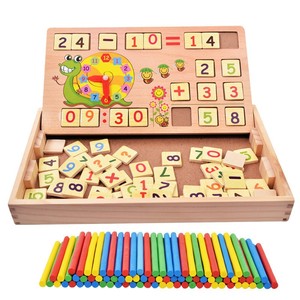
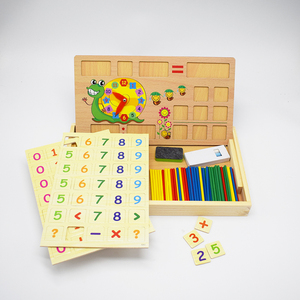
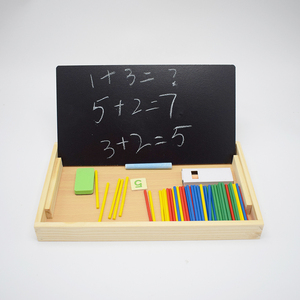
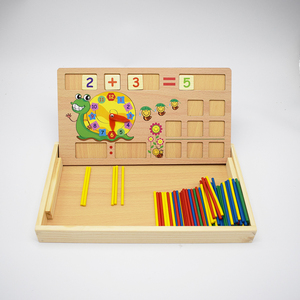
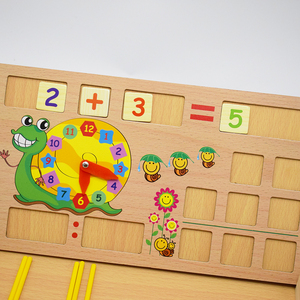
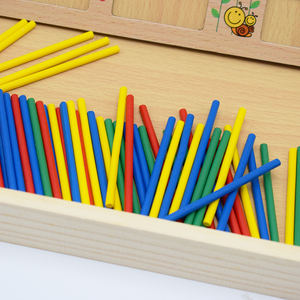


















Multiplication division board games come in different varieties that offer unique challenges and learning experiences. Here are some common types:
Traditional Board Games
Classical board games on the board arithmetic of multiplication and division, like 'Monopoly' and 'The Game of Life', require players to calculate costs, manage money, and make financial decisions. These games help players develop logical thinking and problem-solving abilities in real-life situations. They also provide a solid foundation for understanding the practical application of mathematics in everyday life. Moreover, they aid in the development of critical and creative thinking skills, which are necessary for success in today's world. Overall, traditional board games are more than just fun; they are effective tools for learning and skill development.
Educational Math Games
These games are explicitly made to teach and practice multiplication and division skills. They frequently include entertaining tasks, quizzes, or problems that require players to solve mathematical equations to proceed. Games like "Math Bingo" or "Equatio" involve players in competitive activities that reinforce their math abilities in a fun environment. These games aim to make learning math enjoyable and interesting, helping players gain confidence in their multiplication and division abilities.
Strategy Games
Board games like 'Settlers of Catan' and 'Carcassonne' require players to make decisions that involve estimating and calculating. Although these games do not primarily focus on arithmetic, they can help increase logical reasoning and problem-solving abilities. Playing strategy games aids in developing critical thinking skills, which are necessary for success in academic and professional fields. Additionally, these games help individuals learn how to analyze situations, weigh different options, and make sound judgments.
Puzzle Games
Puzzle games, such as "Rush Hour" and "Gravity Maze," challenge players to think logically and solve problems to complete different tasks. While they may not directly teach multiplication and division, they help improve spatial awareness and critical thinking skills. Playing puzzle games can help people learn to approach problems methodically, break them down into smaller parts, and come up with effective solutions.
Multiplication and division board games are versatile educational tools that find applications in various scenarios and settings. Here are some key usage scenarios:
Classroom Learning
These games can be used as teaching aids during math lessons to engage students in interactive and competitive learning. They can also be used during group work to allow students to collaborate and discuss mathematical problems. During math centers or stations, the games can be used to provide students with hands-on practice of multiplication and division. Also, they can be used to support students who have learning difficulties to understand the concepts of multiplication and division in a more concrete way.
Homeschooling
Homeschooling parents can use these games to make math lessons more enjoyable and less intimidating. They provide a break from traditional worksheets and lectures while reinforcing essential math skills.
After-School Programs
Multiplication and division board games can be included in the curriculum of after-school programs to provide a safe and supportive environment for children to learn and play. The games can be used to help children who need extra help with their math homework.
Math Clubs
These games can be a regular feature in school math clubs, where students can gather to challenge each other and improve their math skills. They can also be used during math competitions as a warm-up exercise or a fun challenge.
Parents can use multiplication and division games to help their children with homework in a more enjoyable way. They also create a platform where children can teach their parents the games, fostering a two-way learning experience.
Special Education
The games can be used by special education teachers to work on students' math skills. The visual and tactile elements of board games can be beneficial for students with learning disabilities.
Skill Building
These games can be used during school breaks, such as during winter or summer breaks, to keep children's minds active and sharp. Also, they can be used during field trips to provide a math-related activity that complements the trip's educational goals.
Community Programs
Local libraries, community centers, and other organizations often run math game nights where multiplication and division board games can be featured. These events provide a platform for children from different schools to meet and compete in a friendly environment.
Selecting the right multiplication division board game for a child involves several important considerations.
Age Appropriateness
It is necessary to ensure that the game is suitable for the child's age and grade. Games that are too difficult can be frustrating, while those that are too easy may not be engaging. Look for games specifically marketed for the child's age group or check the recommended age range on the game packaging.
Educational Value
Look for games explicitly designed to teach multiplication and division skills. These games often include structured activities, quizzes, or problem-solving exercises that reinforce mathematical concepts. Choose games that align with the specific skills the child needs to practice, such as memorizing multiplication tables or understanding division as an inverse operation.
Engagement and Interest
Choose a game that is visually appealing and interesting to the child. Bright colors, attractive designs, and interactive components can make the game more enticing. Consider the child's interests and hobbies. For example, if they enjoy adventure stories or space themes, look for a board game that incorporates those elements.
Difficulty Level
Check if the game has adjustable difficulty levels. This feature allows the child to start at a comfortable level and gradually increase the challenge as their skills improve. Adjustable difficulty levels can also accommodate multiple players with varying skill levels.
Quality and Durability
Select a game made from high-quality materials that will withstand regular use. Look for sturdy game boards, well-made cards, and durable playing pieces. Read reviews or seek recommendations to find reputable brands known for their multiplication and division games.
Multiplayer Options
If the child enjoys playing with siblings or friends, consider a game designed for multiple players. Multiplayer games can provide social interaction, friendly competition, and collaborative learning experiences.
Supplementary Learning
Remember that board games should not replace traditional learning methods. Instead, they should supplement classroom instruction and homework. Encourage the child to continue practicing multiplication and division through worksheets, tutoring, or online resources.
Multiplication and division board games are designed with various features that enhance gameplay and provide educational value. Here are some common functions, features, and design elements:
Function
The primary function of multiplication and division board games is to help players learn and practice multiplication and division skills in an engaging and interactive way. The games create a fun learning environment that reduces the stress associated with traditional rote memorization methods.
Features
These games often incorporate several features to make them more enjoyable and educational, including:
Design
When it comes to design, multiplication and division board games often feature:
Q1: Can someone find multiplication and division games that are not related to math?
A1: Yes, there are plenty of non-math-related games. They are called "math-free" games, where players use strategy, logic, or critical thinking skills to play. Some popular examples include chess, checkers, go, sequence, and scrabble, among others. These games help sharpen the mind in different ways other than math.
Q2: What are the benefits of playing board games?
A2: Board games offer educational and social benefits. They enable people to enjoy their free time and keep their brains active. Playing games in a group or with family members helps one to bond, as they provide a more fun and interactive experience. In addition, they help children improve their math skills.
Q3: How can division be explained in simple terms?
A3: Division can be explained as the act of sharing things equally. For instance, if there are 12 apples and 3 people, one can ask how many apples each person gets if they are shared equally among the three people. This simply means doing division, and the answer shows what each person receives.
Q4: Why are multiplication and division board games good for kids?
A4: These games help children to think critically and logically. They also keep kids entertained and engaged while learning. Through these games, kids can understand the concepts of multiplication and division in a fun and enjoyable way.